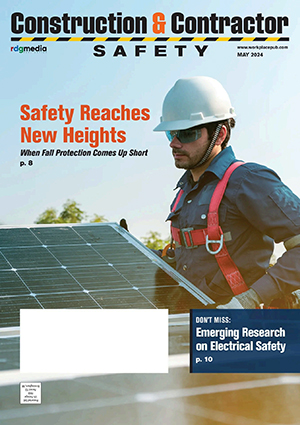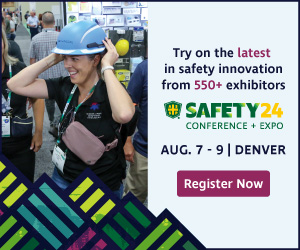Leverage Mobile Apps & Technology For Lone/Remote Workers
By: Gen Handley, Contributor

A lone worker is a person performing their job in an environment or circumstances in which emergency assistance isn’t readily available or accessible. (© chitsanupong – stock.adobe.com)
Whichever industry you’re in, chances are high that you will be required to work alone at some point. This might be in a remote location of a large facility/plant or a rural area. Regardless of your job, there may be times when you’re alone and, as a result, more vulnerable to specific occupational hazards.
The definition of a lone worker can entail positions in virtually every industry and is based on the core challenge of access to help in an accident or emergency. A lone worker is a person performing their job in an environment or circumstances in which assistance isn’t readily available or accessible if they experience an emergency or require support.
While there are lone workers in almost every sector, some industries employ more than others, such as healthcare, agriculture, hotel and hospitality, as well as water and electrical utilities—all areas that are essential to healthy communities and jurisdictions.
What They Face
People who perform this essential work face occupational hazards that are unique to their lone and isolated circumstances, such as increased violence and harassment from members of the public or animals; and safety hazards that wouldn’t be typically dangerous with a coworker nearby to help, such as unconsciousness from a fall.
If you’re alone and outside, it could be hazardous. According to recent OHS research, slips, trips and falls make up about 30% of lone worker accidents and emergencies.
How Technology Can Help
Many positions require the employee to work alone, and it can be difficult, if not impossible, to have a coworker nearby—especially in confined spaces and structures in a remote environment. The solution to this is using emerging technologies and devices to track the safety of lone workers using innovations like satellite and GPS tracking and a safety app dedicated to lone worker check-ins.
According to the OSHA Act of 1970: “Each employer shall furnish, to each of his employees, employment and place of employment which are free from recognized hazards that are causing or are likely to cause death or serious physical harm to his employees.”
Proactively equipping lone workers with safety apps and technology demonstrates compliance, creating a workplace free from recognized hazards that could harm these workers—saving employees from harm and the company from potential litigation. By providing advanced safety apps and tools to lone workers, you are demonstrating that the safety of your people is a top priority, which is viewed favorably by others in your industry and future employees.
How to Stay Connected
Just as imperative as compliance, using mobile safety apps will maintain essential connection between the lone worker and the employer or safety monitor. Even for rural workers, that connection and communication can be maintained through satellite and GPS devices, such as Globalstar.
But these channels, like mobile safety apps, are almost pointless if staff are not adequately trained in their use—and if they’re not used regularly as part of operations and the workplace culture. A connected company is safer and more cohesive, with all the employees on the same OHS page, feeling safer when performing their various tasks and work.
Perform thorough work and research to determine which types of communication work best within the team and address your unique safety issues. Your people and your company are worth it.
Gen Handley is Marketing and Growth Coordinator for Tsunami Solutions Ltd., gen.handley@safetylineloneworker.com
Share on Socials!
Bump Test and Calibration Issues and Answers
Spotlighting OSHA’s Lead Standards: Proposed Updates & Implications
Threshold Tips for Surviving a Federal OSHA Inspection
Leaders in Industrial Hygiene
Council for Accreditation in Occupational Hearing Conservation (CAOHC)
Subscribe!
Sign up to receive our industry publications for FREE!










